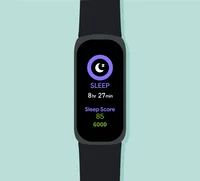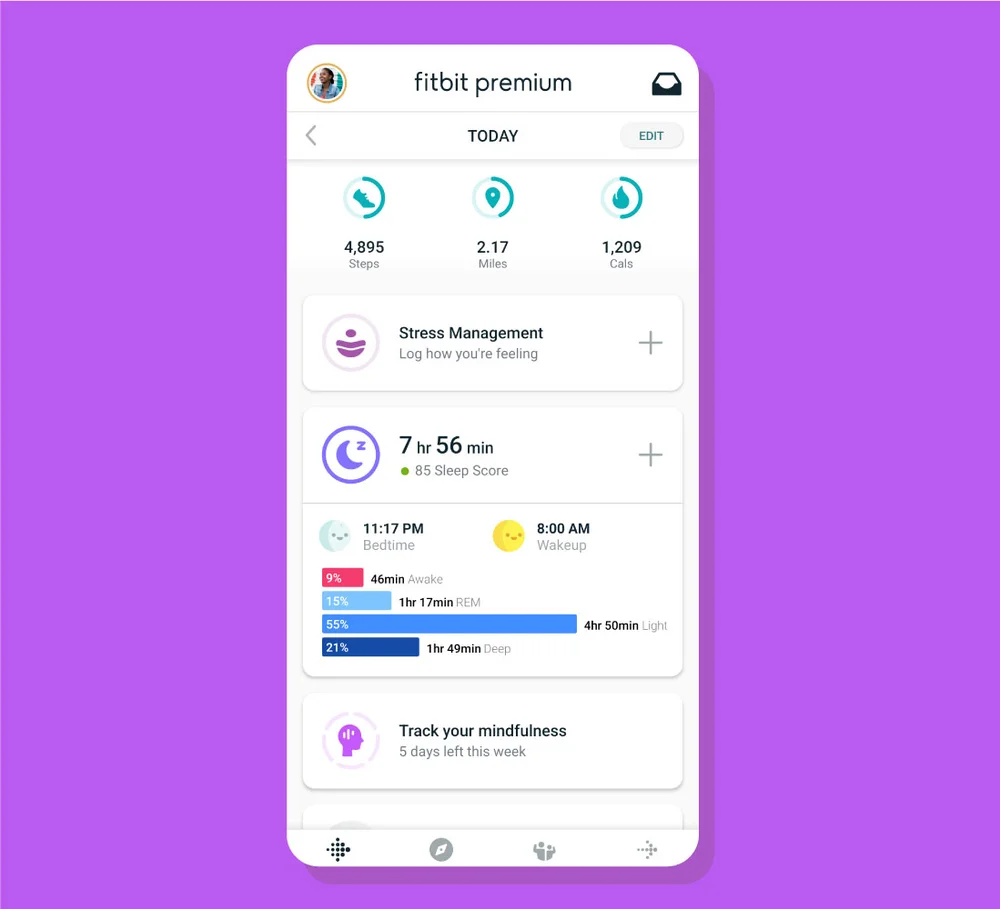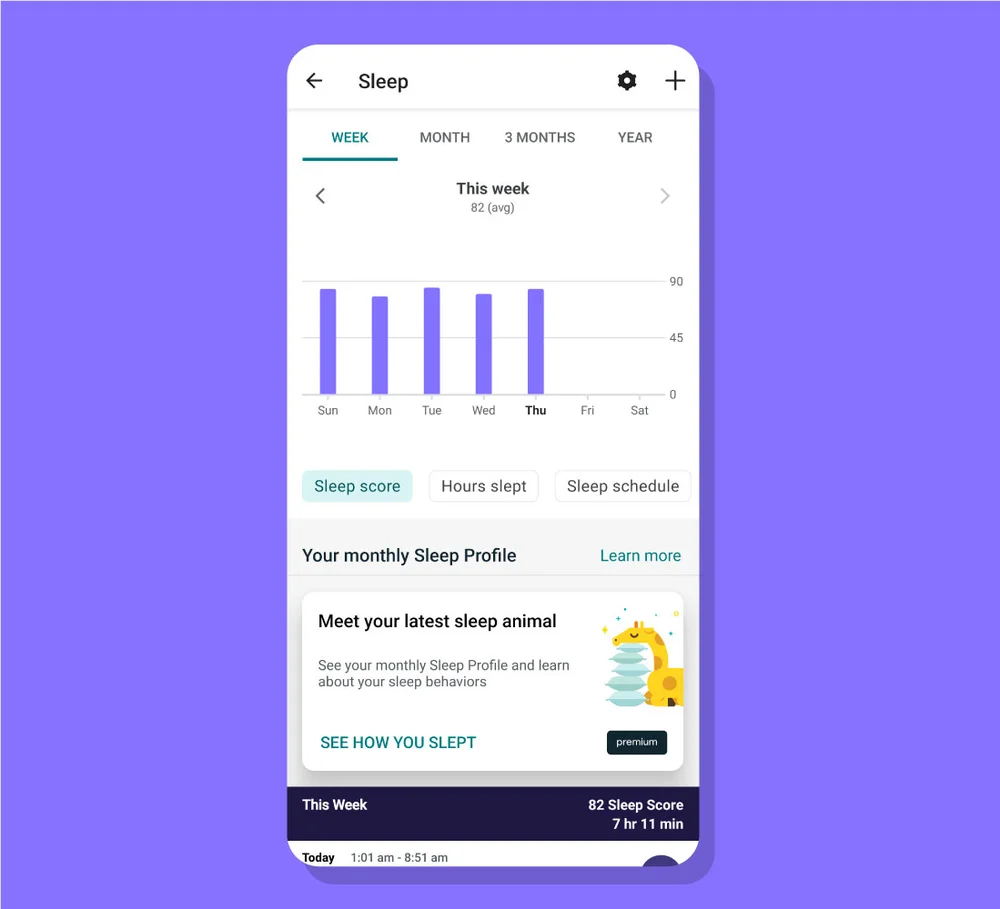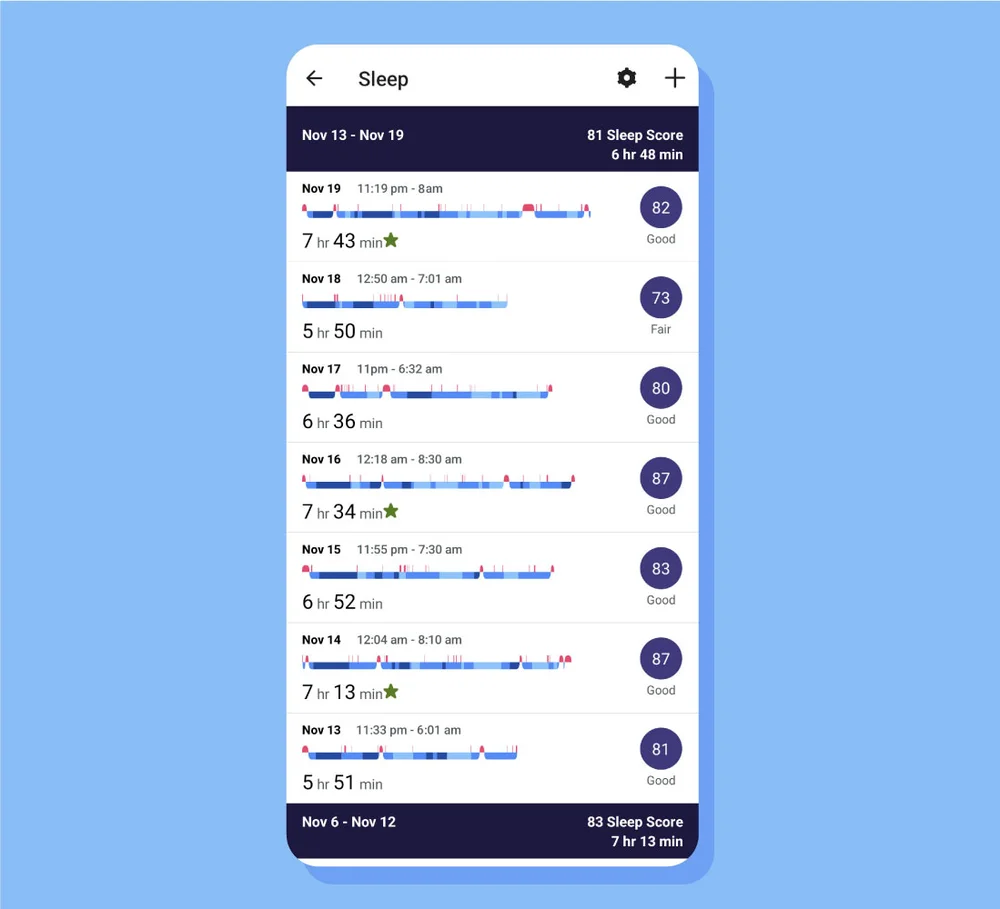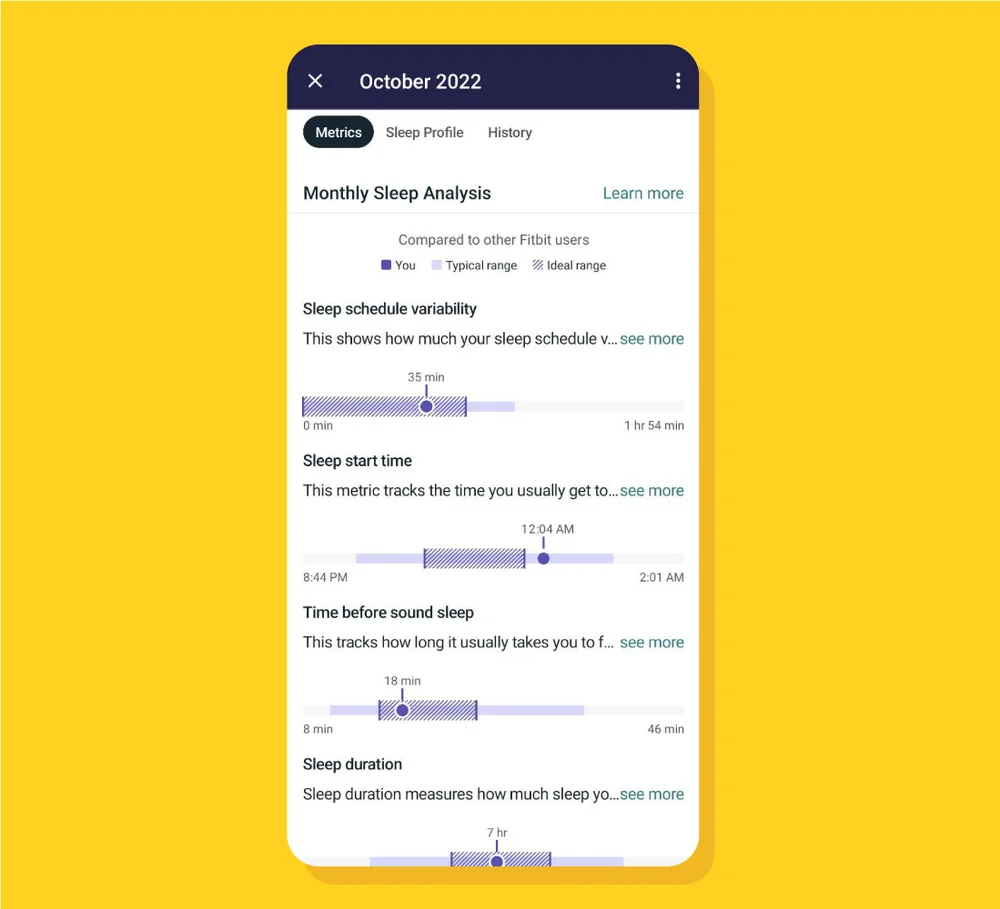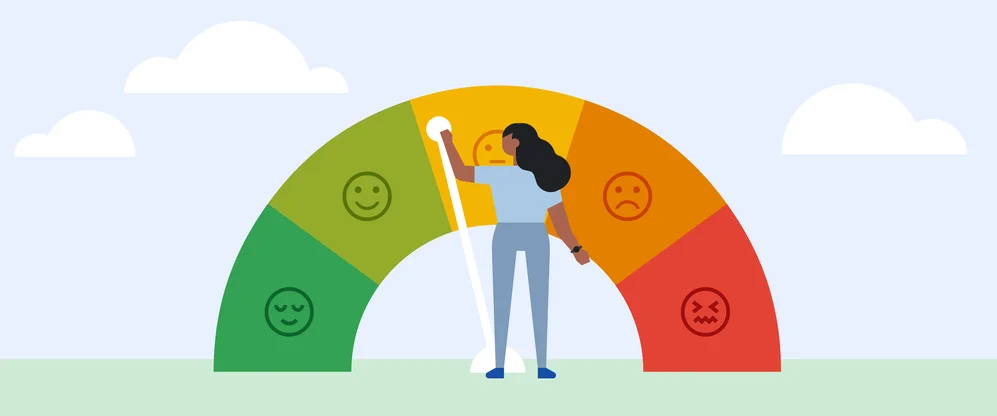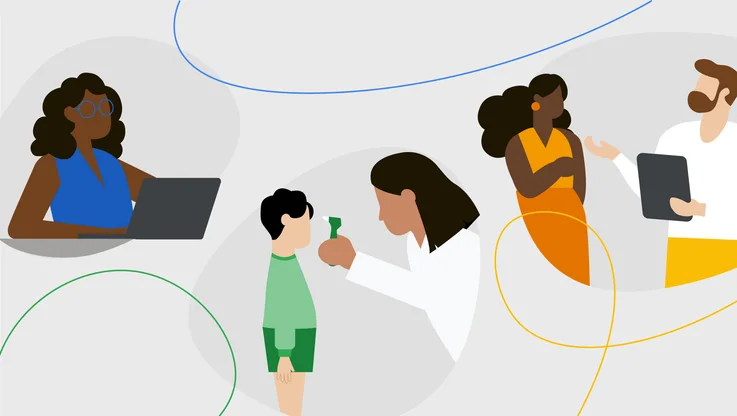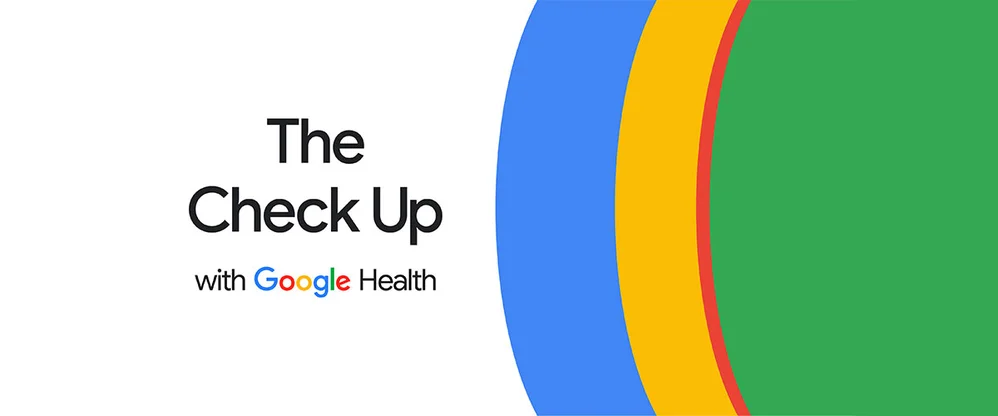I tried Fitbit’s new sleep features for two months
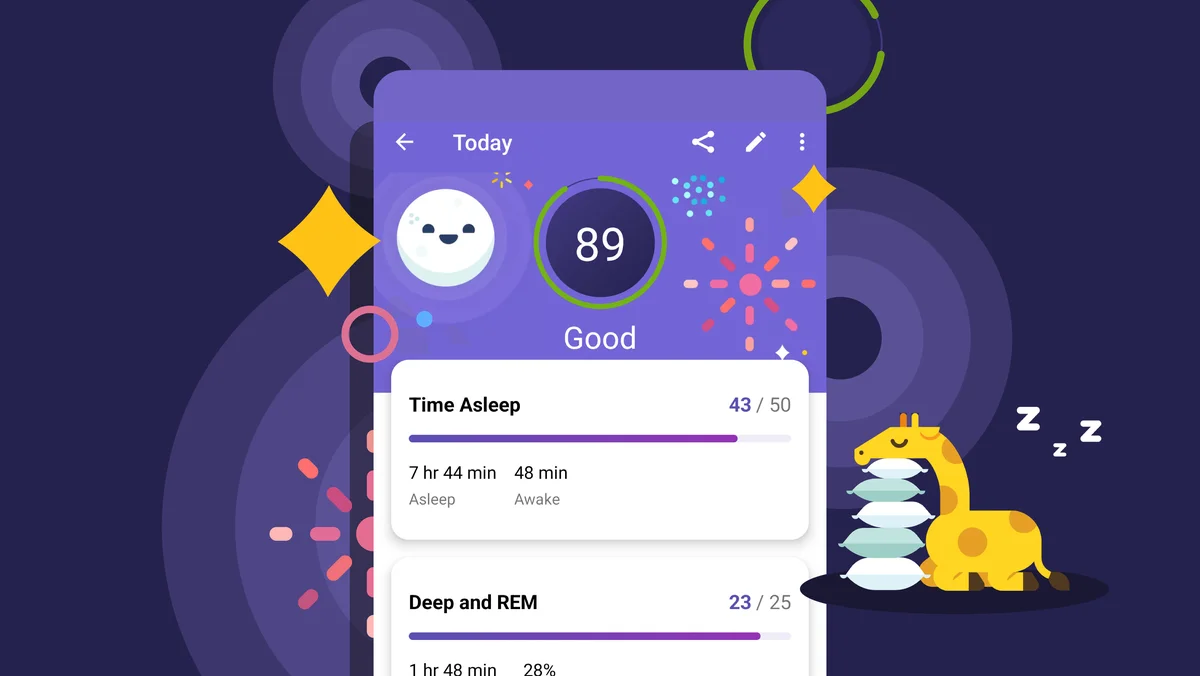
As soon as Fitbit’s Premium Sleep Profile launched back in June, I was intrigued by the thought of using data to get better rest. There are few things I love more than sleep, but I just don’t prioritize it enough. As a child, I’d stay up late to read with a flashlight under the covers. Now, I spend a bit too much before-bed time exploring fascinating internet rabbit holes.
But I’ve also wondered if I sometimes feel tired due to an issue of sleep quality, not just quantity. Before this experiment, I thought it was easy to know how much I slept each night (spoiler alert: it’s not, and you’ll learn why below). But I wasn’t sure how to get an objective read on my sleep quality until I realized Fitbit could track it for me. Then I learned Fitbit’s Sleep Profile would assign me a “sleep animal” to describe my rest-related habits. At that point, I knew I had to give it a try. Since I work at Google, I’m lucky enough to have easy access to the Fitbit team, who very graciously set me up with a device.
In the name of learning all about my sleep — and potentially getting better rest — I tested Fitbit’s Sleep Profile for two months. Here’s a primer on how the Fitbit Premium Sleep Profile works, the six Sleep Profile animals that represent different sleep styles, and seven things I learned (and loved) from my experience.
How the Fitbit Premium Sleep Profile works
The Sleep Profile is Fitbit’s latest rest-related update since introducing sleep tracking in 2009. It’s available for Fitbit Premium members with Google Pixel Watch, Sense 2, Sense, Veras 4, Versa 3, Versa 2, Charge 5, Luxe, Inspire 2 or Inspire 3 devices.
Before Sleep Profile, Fitbit provided sleep stats, like how long you were awake, your restlessness and your sleep stages, and used them to generate a nightly Sleep Score from 1 to 100.
Fitbit’s Sleep Profile levels up this tracking, providing a detailed monthly analysis of these 10 features the Fitbit research team identified as most important for a cohesive picture of sleep quality and quantity:
- Sleep schedule variability: how much your sleep schedule varies from day to day.
- Sleep start time: the time you usually get to sleep.
- Time before sound sleep: how long it usually takes you to really fall asleep.
- Sleep duration: how much sleep you get on average.
- Deep sleep: how much time you spend in the most refreshing sleep stage.
- REM sleep: how much time you spend in the rapid-eye-movement sleep stage, when your brain is working on problems and processing emotions.
- Restorative sleep: how much time you spend with your heart rate lower than your usual resting rate.
- Sleep stability: how often your brain wakes up for a moment as you change sleep stages or sleep position (often without you realizing it).
- Nights with long awakenings: how many nights you spend awake for long periods due to things like noise.
- Days with naps: how many naps Fitbit detects each month.
As long as you’ve worn your Fitbit to bed for at least 14 nights of the previous month, on the first day of each month, you’ll get a monthly Sleep Profile analyzing these metrics. You can explore this data in a bunch of helpful formats to find whichever works best for you (more on that below).
The six Fitbit Sleep Profile animals
On the first of each month, your Fitbit Sleep Profile will also reveal which animal represents your most recent sleep habits. The options are these six animals with distinct sleep behaviors that also correspond with common human sleep patterns:
- Bear: You tend to have a consistent sleep schedule, regularly falling asleep around the same time. You go to bed earlier than most, and you tend to reach a sound sleep quickly. Your sleep tends to be long and restful, with a relatively high proportion of deep and REM sleep.
- Dolphin: You tend to fall asleep later than most and sleep for less time overall — maybe due to an inconsistent sleep schedule, or more disrupted sleep at night. Compared to others, you tend to be a lighter sleeper and might take naps to catch up. Interestingly enough, dolphins are the least common sleep animals assigned to Sleep Profile users.
- Giraffe: Your sleep tends to be shorter, and you are more likely to sleep later and wake up earlier. You have a relatively good proportion of deep and REM sleep despite a shorter overall duration. And if you’re a giraffe like me, you’re certainly not alone — this is the most common sleep animal among users.
- Hedgehog: You usually fall asleep later and wake up earlier. You are a lighter sleeper — typically taking longer to reach sound sleep and may get less deep and REM.
- Parrot: You tend to keep a consistent bedtime and don’t sleep too early or late. You typically reach sound sleep quickly and usually get a good amount of sleep each night. You likely sleep deeply once you drift off but can be light on REM due to waking up briefly throughout the night.
- Tortoise: You tend to fall asleep at different times each night, but often earlier than most. Paired with slightly later average wake times, you tend to spend more time in bed overall but may find it takes longer to reach a sound sleep, impacting your lower than average deep and REM sleep.

Your sleep animal may change from month to month depending on your habits.
7 things I loved about my two-month Fitbit Sleep Profile experiment
1. Setting up my Fitbit was so simple.
This was especially helpful as a wearable tracker newbie. First, I unboxed my Inspire 3 device and set it up to charge. In the meantime, I downloaded the Fitbit app on my Pixel, confirmed that I wanted to Bluetooth pair my tracker with the app and entered some quick information about myself, like my height and weight.
The next morning, the Fitbit app took me through an incredibly helpful tutorial of everything I needed to know, like that the band should be loose enough to slide up and down my wrist and what information I’d see when I swiped the screen a certain way. That quick tutorial was all the instruction I needed for my entire experiment — once the device and app were set up, all I had to do was wear it to track my sleep and get a profile.
2. My Fitbit’s 10-day battery life is the stuff of dreams.
I’m frankly still not over this: When fully charged, Fitbit’s Inspire 3 can last for up to 10 days. I’d just hook it up on certain days when getting ready for work. This extended battery life made my tracking a lot more accurate than it would have been if the device were constantly dying and missing out on data.
3. Looking through my sleep data was fascinating.
Fitbit’s data presentation felt like the best kind of choose-your-own-adventure — I loved exploring the various digestible yet thorough ways to understand my sleep:
- In the morning, I could swipe up on my Fitbit to see my Sleep Score from the night before.
- To get more details, I’d open my Pixel’s Fitbit app and sync my Fitbit with my phone. The app’s landing page would then show the previous night’s Sleep Score, along with my bedtime, wake time and amount of time spent in different stages of sleep.
- Tapping into that sleep section showed me vertical bar graphs of my last week, month, three months or even year of sleep data, including how that data compared at different points of time. I could also toggle between looking at my Sleep Score, sleep schedule, how many hours I slept and my time in different sleep stages.
- Scrolling down showcased still more data, this time as horizontal, color-coded visual bars for how I slept every single night of the experiment. It was really telling to see at a glance that my graphs had more red moments representing awakenings the nights I caved and let my cat “sleep” in my bed. I could also tap into any night’s graph to see details of my Sleep Score.
- All of the above is separate from the official Sleep Profile. The monthly Sleep Profile is a section all on its own that I could tap into for a full analysis of those 10 key metrics from the previous month and where I fell compared to the typical and ideal ranges.
My main takeaways from poring over all this helpful data for two months? Overall, my sleep was better than I expected! My average Sleep Score for my first month of tracking was 81, which just got me past “fair” territory into “good.” And after becoming more aware of and invested in my sleep my first month of tracking, my average Sleep Score actually increased by a point in my second month. This was great since there was a lot more going on in that second month, like early wakeups for Thanksgiving travel, that normally would have affected my sleep more if I hadn’t been correcting for it.
4. The Smart Wake feature made mornings less groggy.
Raise your hand if you’ve ever been personally victimized by setting and snoozing too many alarms in a bid to get even a moment’s more sleep. The thing is that the “sleep” I get between said snoozes is absolutely not quality rest. Fitbit’s Smart Wake alarm did me such a solid here, right from my wrist.
Smart Wake woke me with gentle vibrations at the lightest point in my sleep cycle within 30 minutes of the time I needed to be awake, leaving me more energized and ready to take on the morning than when I’m struggling out of a deep sleep cycle. This was especially helpful on mornings when I had wildly early wakeup times, like one morning I needed to be up at 4 a.m. to try to book a restaurant reservation for a trip abroad.
One thing I did realize, though, was that even Smart Wake couldn’t banish my morning grogginess if I didn’t make sure to get at least seven hours of actual sleep. And, as my Fitbit data helped me learn, I was getting less sleep than I thought each night. Those little red “wake windows” on my graph really added up. Even though it’s normal to wake up during the night and not even realize it’s happening, I often spent anywhere from 35 to 55 minutes awake, which really cut into my overall rest.
5. Fitbit’s breathing exercise and guided meditations helped me wind down before bed.
After realizing I was getting less sleep than I thought, I naturally wanted to at least fall asleep as quickly as possible. According to my data, it generally takes me less than 20 minutes to get into sound sleep, which falls into the ideal range. But on nights when I just couldn’t drift off, Fitbit helped.
Some nights, I tried Fitbit’s breathing exercise right from my wrist. All I had to do was swipe left a couple of times to the Relax screen, and my Fitbit showed me a circle graphic that would grow and shrink to help me focus on slow, calming inhales and exhales.
Other nights, I’d explore the guided meditations available in the app on my Pixel. I particularly liked “A meditation to quickly fall asleep,” which featured a soothing talk about relaxing into sleep instead of forcing myself into it. “The sound of nature rain on leaves” felt like my brain was getting a much-needed massage. And sleep stories like “Grassy Meadow Stroll Visualization” painted lovely pictures for drifting off.

There were all sorts of meditations to choose from for better sleep.
6. Getting my sleep animal was as rewarding as I hoped.
I was so curious to know which sleep animal I’d be and if it would change after my first month. This was a real motivation to make sure I tracked, since you only get an animal assigned with at least 14 nights of data each month. And after looking through my stats, I’m not surprised to be a giraffe through and through.

Who knew I had so much in common with giraffes?
Looking at some of the metrics that classify me as a giraffe — like my average sleep start time, which is later than the ideal range and just on the end of the typical one — pinpoint some potential areas for improvement. For help with that, I’m eyeing Fitbit’s Sleep Schedule feature, which lets you set up a sleep schedule and bedtime reminders.
7. Fitbit’s workout encouragement helped me tire myself out.
If I’d known my Fitbit would basically be a life coach and cheerleader right on my wrist, I’d have tried one out a lot sooner. When my Fitbit detected I’d hit activity goals like walking 10,000 steps a day or racking up Activity Zone Minutes, it would vibrate on my wrist, celebrating me with a burst of fun graphics and encouragement. This delightful positive feedback reminded me that I was doing something good for myself. It also made me want to move my body more for those pats on the, well, wrist. Not only did that help me feel more accomplished overall, but getting more physical activity is known to help improve sleep quality and quantity — so it’s a win-win.

